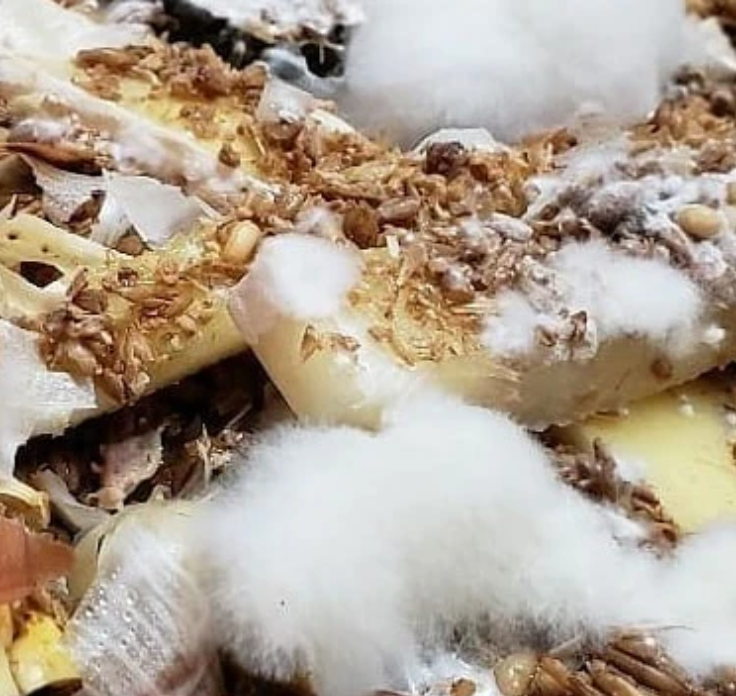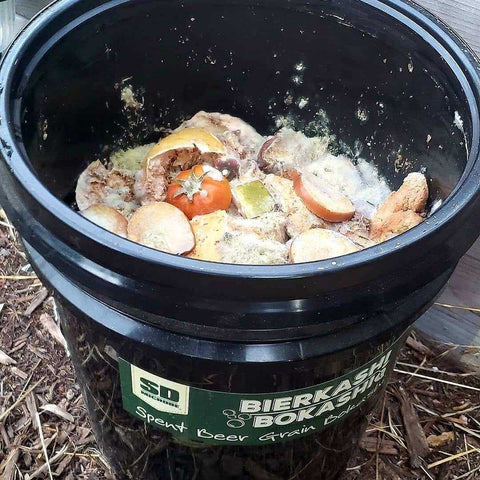
The Ultimate Guide to Bokashi Composting: Revolutionize Your Waste Management
Share

1. Introduction to Bokashi Composting
Bokashi composting is a method that has gained popularity among environmentally conscious individuals for its simplicity, efficiency, and ability to compost a wide variety of organic materials—including those not typically suitable for traditional composting, like meat and dairy. But what is Bokashi composting, and how does it stand out in the world of waste management?
What is Bokashi Composting?
Bokashi composting is an anaerobic process that relies on microorganisms to ferment food waste, converting it into a pre-compost material that can be buried in the soil to complete the decomposition process. The term "Bokashi" comes from Japanese, meaning "fermented organic matter."
The Origin of Bokashi Composting
The practice of Bokashi composting originates from Japan, where it was developed as a sustainable solution for food waste. It leverages effective microorganismsor Lactobacillus to speed up the fermentation process while minimizing odors, making it perfect for indoor composting.
Bokashi vs. Traditional Composting
Unlike traditional composting, Bokashi doesn’t require oxygen or regular turning. The process is much faster, typically taking two weeks to ferment the organic waste in an airtight container. Moreover, Bokashi composting can handle food items like meat, dairy, and oily products, which are usually problematic in traditional compost systems.
2. How Bokashi Composting Works
Bokashi composting harnesses the power of fermentation and microorganisms to break down organic waste efficiently. This unique fermentation process transforms kitchen scraps into nutrient-rich material for your garden.
The Role of Microorganisms
The microorganisms in Bokashi composting are essential for the fermentation process. These are primarily lactic acid bacteria, yeast, and phototrophic bacteria, which help break down the organic matter without requiring oxygen.
Fermentation vs. Decomposition
A key aspect of Bokashi composting is fermentation rather than decomposition. Traditional composting relies on aerobic bacteria that decompose organic materials, while Bokashi composting uses anaerobic microorganisms to ferment waste. This fermentation process preserves more nutrients and prevents foul odors typically associated with rotting food.
How Bokashi Composting Breaks Down Organic Material
The Bokashi method does not fully break down the waste in the bucket. Instead, it pre-treats the material through fermentation, making it easier for soil organisms to complete the composting process when the material is buried in the ground.
3. Essential Materials for Bokashi Composting
To get started with Bokashi composting, you only need a few key materials. The process is simple, but each component plays an important role in ensuring success.
Bokashi Bin
The Bokashi bin can be any airtight container. Most Bokashi bins also feature a spigot at the bottom for collecting the liquid byproduct, known as Bokashi tea. However we find this to be a waste of time. The leachate holds very little nutritional value and does not make the need for daily maintenance worth the effort. For this reason at SD Microbes we opt for a container without a spigot. This remove the need for daily maintenance. Everything can ferment together and be added to the soil together.
Bokashi Bran
Bokashi bran is a critical component. It's typically made of wheat bran or rice bran inoculated with effective microorganisms. This bran helps kick-start the fermentation process by introducing the necessary microbes to the waste. Our blend is a mix of Organic Spent beer grains and wheat bran giving you the most bang for your $. MOst companies opt to use Rice bran as it is heavier and easier to pack. But you certainly get less bokashi.
Food Scraps
Bokashi composting is remarkably versatile when it comes to what you can compost. From vegetable peels and fruit scraps to leftover pasta, meat, and dairy, most kitchen waste can be added to the Bokashi bin.
4. Step-by-Step Bokashi Composting Process
Getting started with Bokashi composting is easy, and the process can be broken down into a few simple steps.
Preparing the Bokashi Bin
Start by setting up your Bokashi bin in an easily accessible location, preferably indoors where you prepare food. Ad a sprinkle of bokashi to the bottom of the bucket.
Adding Food Scraps
As you prepare meals, collect your kitchen scraps and add them to the Bokashi bin. It’s best to cut larger pieces into smaller bits to speed up fermentation. After adding a layer of food (about 2 inches), sprinkle a handful of Bokashi bran over the waste.
Layering with Bokashi Bran
Every time you add new waste, be sure to cover it with a layer of Bokashi bran. This layer of bran introduces the microorganisms that will ferment the food waste.
Sealing the Bin Properly
After adding food scraps and Bokashi bran, tightly seal the bin to maintain an anaerobic environment. The airtight seal is crucial for ensuring the fermentation process occurs without unwanted odors.
Our Airscape lids is a great way to seal any 3 to 7 gallon bucket with ease and also removes air from the bucket allowing for better fermentation.

5. What Can and Cannot Be Added to Bokashi Composting

Bokashi composting offers incredible flexibility in terms of what you can compost, but it’s still important to understand which items work best and which should be avoided.
Suitable Food Waste for Bokashi
Almost all types of food scraps can be added to your Bokashi bin. This includes:
- Fruits and vegetables
- Meat and fish
- Dairy products
- Bread and grains
- Coffee grounds and tea bags
Items to Avoid
While Bokashi is more forgiving than traditional composting methods, certain items should still be avoided, such as:
- Large bones
- Excessive amounts of liquid
- Non-biodegradable materials (plastic, metal)
- Chemical waste
Dealing with Troublesome Materials
Certain materials, like eggshells and citrus peels, can be harder to break down but can still be composted using Bokashi. Just be sure to crush the eggshells and cut citrus peels into smaller pieces.
6. Harvesting and Using Bokashi Ferment
When is the Bokashi Ready?
The fermentation process typically takes around 10–14 days, after which the food scraps will appear pickled and have a sweet-sour smell. The waste won’t be fully decomposed at this point but is ready to be buried in the soil.
How to Use Bokashi Compost in Your Garden
Once your Bokashi bin is full and has fermented for two weeks, the contents can be buried directly in the garden. Within 2-4 weeks, the compost will fully break down, enriching your soil with vital nutrients.
Creating Nutrient-Rich Soil with Bokashi
Bokashi compost is highly nutritious and beneficial for your soil. The fermentation process preserves the nutrients within the organic waste, making them more readily available to your plants.
What makes our BierKashi Bokashi truly unique is its use of upcycled organic beer grains from Protector Brewing in San Diego, making it one of the first Bokashi products crafted from upcycled materials.
BierKashi takes sustainability to the next level by repurposing spent grains that would otherwise go to waste. Breweries often produce large quantities of grain byproducts during the brewing process, and these grains still hold nutritional value that can be harnessed for composting. By collecting and reusing these grains from a local, eco-conscious brewery like Protector Brewing, BierKashi not only creates a high-quality Bokashi bran but also supports a circular economy, minimizing waste at every stage.
